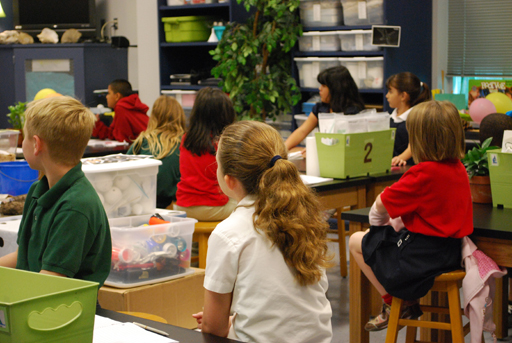3.1 STEM Capital
There are strong societal stereotypes about gender and STEM subjects and that these stereotypes are often translated into unconscious biases among parents, teachers and pupils themselves, which can influence their performance, interest and engagement in STEM subjects. As girls get older and as subject choices are introduced, fewer girls than boys study STEM subjects.
Factors that influence education outcomes
Education researchers have long known that a range of different, and not necessarily obvious, factors contribute to success in education more broadly, as well as to specific outcomes such as engagement with STEM. These range from individual factors such as gender, birth weight or ethnicity to family influences, including socioeconomic status, mother's education, father's education, family income, and quality of the home learning environment, to school-based factors, such as pre-school/nursery effectiveness, and primary school effectiveness.
What is STEM capital?
One way to think about these issues is the idea of ‘STEM capital’, which can help us understand differences in participation in STEM subjects among different groups. It can also help design initiatives to improve participation.
The notion of STEM capital, or STEM-related forms of social and cultural capital, draws on longer established ideas of Cultural Capital pioneered by the French sociologist, anthropologist and philosopher, Pierre Bourdieu. Many of the useful sources and research papers associated with the concept refer to ‘Science Capital’ rather than ‘STEM Capital’, however, the concept is inclusive and comfortably includes Technology and Mathematics. This course uses STEM capital throughout but you will find that some of the links refer to Science Capital.
STEM capital encompasses all the STEM related knowledge, social contacts, attitudes, skills and experiences a pupil or person has and how those resources inform their engagement and choices in school. It recognises the significance of what you know, how you think, what you do and who you know in shaping your relationship with science and technology.
Activity 1
Watch the short (two minute) video produced by the enterprising science team at Kings College London https://www.youtube.com/ watch?v=A0t70bwPD6Y [Tip: hold Ctrl and click a link to open it in a new tab. (Hide tip)]
Reflect on what you’ve watched. The animation argues that STEM capital is shaped and formed by
- What you know
- How you think
- What you do
- Who you know
Write down your initial thoughts on how useful the concept is in your learning log. Note any aspects that you would like to clarify or explore further. Where do think that you could have an impact on the formation of your pupils’ STEM Capital in your role as a classroom teacher? Save your notes so that you can share and develop these observations in your study group.
How STEM capital relates to gender
A STEM capital approach is fundamentally concerned with social justice. The Kings College team stress that
‘… a science capital approach is about trying to understand, identify, monitor and challenge inequalities. It means recognising the importance of power and how inequalities are perpetuated in society. A science capital approach is primarily concerned with helping to achieve improved life chances and outcomes for diverse individuals and communities.’
Recent studies and analysis have shown that the more STEM capital a young person has, the more likely they are to want to continue with STEM subjects in school and in post-16 education and to have a strong STEM/science identity.
The Kings College researchers have studied STEM capital and its influence on participation in STEM classes, subject choices and careers. They specifically looked at the role of gender.
Higher levels of science capital appear to be concentrated more among boys. According to one study, boys had significantly higher means on the science capital variable than girls.
Likewise, the proportion of boys was higher in the high science capital group, relative to their representation in the overall sample (54% vs. 46%).
They conclude that while girls perform as well as boys in math and science at a young age and are equally interested in the subjects, they aren’t developing the same levels of STEM capital.
Activity 2
Think about your classroom and experiences with people in your school. In your learning log, record your thoughts on the following questions. Do you see evidence of different amounts of STEM capital among pupils? Are there differences between boys and girls? What about among your fellow teachers?
Reminder – the 4 components are:
- What you know
- How you think
- What you do
- Who you know
Further reading: You can find out more about the ASPIRES/ ASPIRES2 and Enterprising Science research projects, based at King’s College London at www.kcl.ac.uk/aspires/ www.kcl.ac.uk/enterprisingscience
Introduction

